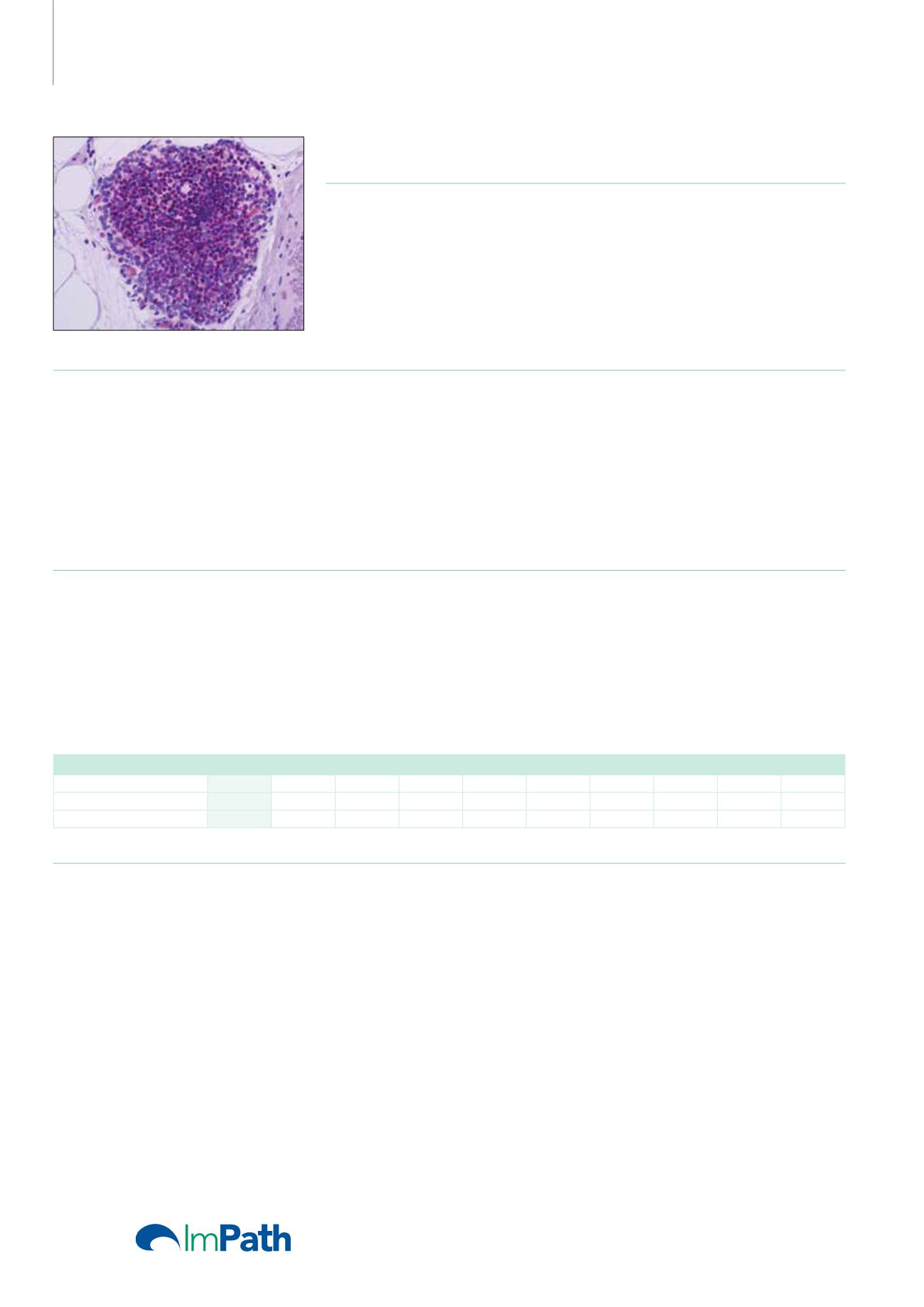
Antibodies for
Immunohistochemistry
TdT (Polyclonal)
Rabbit Polyclonal Antibody
Cat. No. Description
Volume
45261 IMPATH TdT RTU R (Poly)
50 Tests
44396 TdT RTU R (Poly)
7 ml Ready To Use
44811 TdT 0,1 R (Poly)
100 µl liquid Concentrated
44812 TdT 1 R (Poly)
1 ml liquid Concentrated
Product Specifications
Designation
IVD
Reactivity
Paraffin
Visualization
Nuclear
Control
Thymus
Stability
Up to 36 mo. at 2-8°C
Manual Protocol*
• Pretreatment: Heat Induced Epitope
Retrieval (HIER)
• Primary Antibody Incubation Time:
10-30min @ 25-37°C
• 2-step polymer detection
*Please refer to product insert for complete protocol.
ImPath Protocol*
• Dewax: Dewax Solution 2 (DS2)
• Pretreatment: Retrieval Solution pH 9.0
(TR1) 32min @ 98-103°C
• Primary Antibody Incubation Time:
10-90min @ 25-37°C
• HRP Polymer (Universal) or AP Polymer
(Universal) for 12 min
*Please refer to product insert for complete protocol.
Product Description
TdT (terminal deoxynucleotidyl transferase) gene is a member of the DNA polymerase type-X family and encodes a template-independent DNA
polymerase that catalyzes the addition of deoxynucleotides to the 3’-hydroxyl terminus of oligonucleotide primers. TdT protein is expressed in
a restricted population of normal and malignant pre-B and pre-T lymphocytes during early differentiation, where it generates antigen receptor
diversity by synthesizing non-germ line elements (N-regions) at the junctions of rearranged Ig heavy chain and T-cell receptor gene segments.
TdT expression occurs in over 90% of acute lymphoblastic lymphoma/leukemia cases with the exception of pre-B-cell ALL. TdT expression
does not occur in normal mature T-or B-lymphocytes. Therefore, anti-TdT is a useful tool in diagnosis of T-ALL/T-lymphoblastic lymphoma and
B-ALL/B-lymphoblastic lymphoma. Anti-TdT labels Type B thymoma, thus it can be used as a diagnostic marker for this entity. Anti-TdT is
positive for approximately one-third of all cases of chronic myeloid leukemia.
Lymphoblastic Lymphomas, B-cell vs. T-cell
TdT
CD10
PAX-5
CD20
CD19
CD3
CD5
CD7
CD117 CD1a
B-cell
+
+
+
+/-
+
-
-
-
-
+
T-cell
+
+/-
-
-
-
+
+/-
+/-
-/+
+/-
Reference
1. Arber DA, et al. Am J Clin Pathol. 1996 Oct; 106(4):462-8.
2. Orazi A, et al. Mod pathol. 1994 Jun; 7(5):582-6.
226


